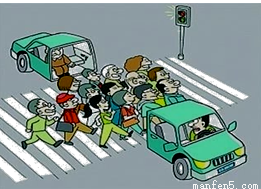近来,“中国式过马路”Chinese Style of Crossing Streets在网络上热炒。请结合下面表格写一篇短文谈谈你的看法。
现象 | 很多人过马路时不看红绿灯 |
|
原因 | 1.缺乏交通安全意识 2.匆忙赶时间 | |
措施 | 1.遵守交通规则 2.你自己的建议…… |
注意: 1. 文中不能出现自己的姓名和班级名称。
2. 开头已给出,不计入总词数。字数:120词左右,不可逐字翻译。
3. 参考词语:缺乏…意识 lack awareness of
Chinese Style of Crossing Streets
Chinese style of crossing streets has been a hot topic on the Internet recently.
____________________________________________________________________________________________
____________________________________________________________________________________________
____________________________________________________________________________________________
____________________________________________________________________________________________
____________________________________________________________________________________________
____________________________________________________________________________________________
____________________________________________________________________________________________
____________________________________________________________________
